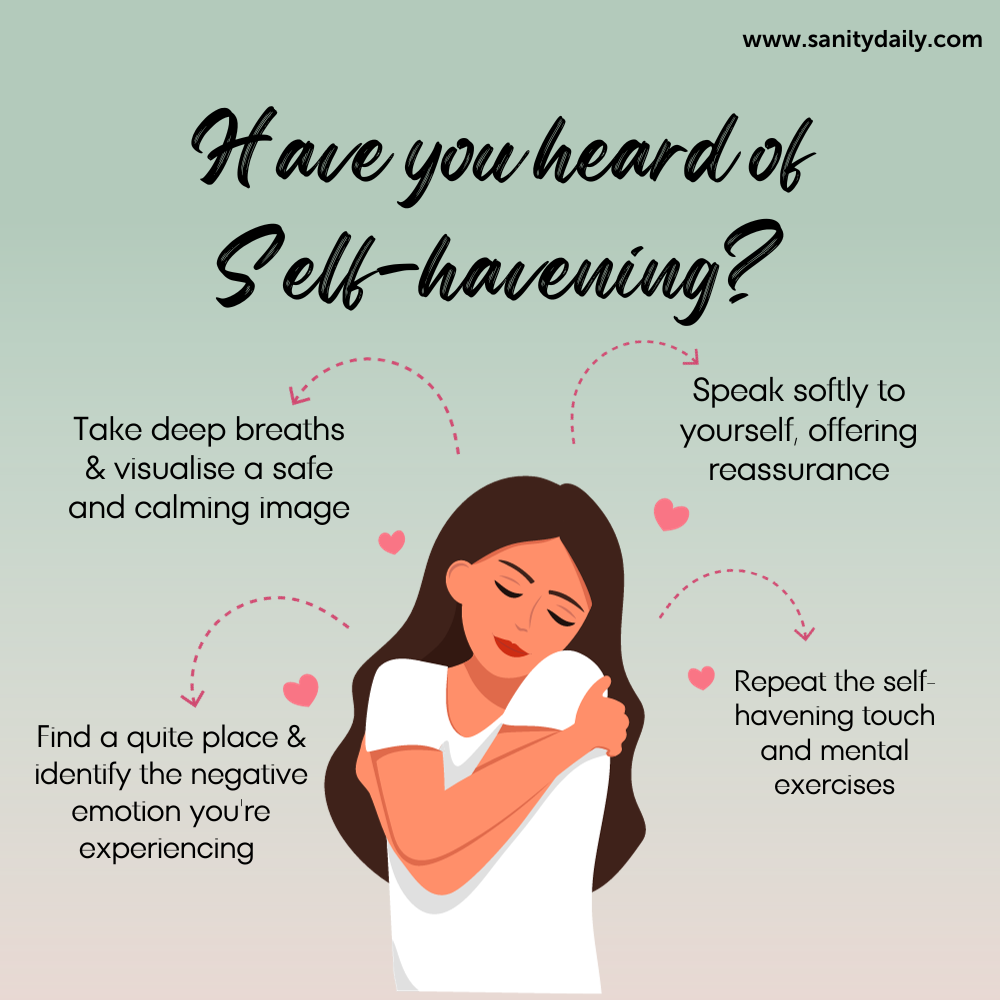
Self-Havening is a self-help technique that has gained popularity for its ability to promote emotional well-being and reduce stress. In this blog, we will explore what personal refuge is and how you can practice it to improve your mental and emotional state.
What is refuge for oneself?
Self-Havening is a self-help technique developed by Dr. Ronald Ruden, physician and psychotherapist. It is based on the concept of Havening Touch, a therapeutic approach that involves gentle, relaxing touch to create a feeling of security and calm. The term “refuge” is derived from the word “refuge”, which means a safe and comforting place.
The primary goal of personal refuge is to reduce emotional distress, anxiety and stress by promoting self-soothing through physical contact. It is a simple but effective practice that can be used to manage a wide range of emotions and improve overall well-being.

How to practice personal refuge
Self-Havening involves a combination of physical contact and mental exercises. These are the steps to practice personal refuge:
1) Find a quiet space: Start by finding a quiet, comfortable space where you can focus on yourself without distractions. It could be a cozy corner of your house or any place where you can sit or stand comfortably.
2) Identify the problem: Think about the emotional or psychological problem you want to address. It could be stress, anxiety, anger or any negative emotion you are experiencing.
3) Self-welcoming touch: Self-welcoming involves gentle, rhythmic touching on specific areas of your body. The most used areas are the arms, face and hands. You can use one or all of these areas for shelter. Start by gently stroking their arms from shoulders to hands, similar to how you would comfort a child. Alternatively, you can gently rub your face or hands.
4) Breathe and visualize: While performing the self-breathing touch, breathe slowly and deeply. As you do this, focus on visualizing a safe, relaxing image or situation. It could be a serene beach, a quiet garden or any place where you feel relaxed.
5) Positive Affirmations: Incorporate positive affirmations into the process. Speak to yourself quietly, offering yourself reassurance and self-compassion. For example, you can say “I’m safe,” “I’m calm,” or “I can handle this.”
6) Continue for a few minutes: Repeat the touch and mental exercises for a few minutes or until you begin to feel a sense of relief or calm.
7) Assess your emotions: After your self-tapping session, take a moment to evaluate how you are feeling. You can notice a intensity reduction of negative emotion or a greater sense of relaxation.
Self-Havening is most effective when practiced regularly. Incorporate it into your daily routine or use it whenever you encounter distressing emotions. By combining gentle touch, positive affirmations and visualization, you can effectively reduce stress and anxiety while improving emotional well-being. Remember to make shelter a part of your daily routine and you can use it as a tool to cope with your daily life.







